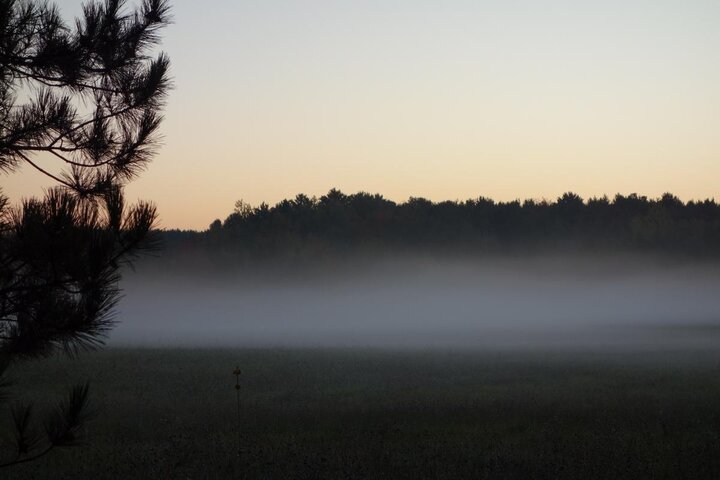Pesticide applicators must be aware of changing weather conditions to make proper applications and reduce the chance for off-target drift. Off-target drift can damage sensitive crops, other plants, trees, and shrubs, as well as harm people, pollinators, and animals.
We know to stop an application when wind speeds are high (generally wind speeds of 3-10 mph are preferable), but what about when winds are low (0-3 mph)? Minimal or very low-speed winds can signal another weather event that can result in substantial pesticide drift: temperature inversion.
Inversions occur when solar radiation is no longer strong enough to heat the earth’s surface at or above the temperature of the surrounding atmosphere. As objects such as crop canopies, soil, and buildings cool, heat from the surrounding atmosphere is transferred to the cooler object. This begins the process of a slow and steady decrease in the atmospheric temperature near the surface, setting the stage for an inversion. This phenomenon of decreasing air temperature near the surface is the “inverse” of normal atmospheric conditions where temperatures are warmest near the ground, thus the name “inversion.”
This radiant cooling places the coldest, densest air next to the surface, preventing atmospheric circulation. This layer starts off very small but can reach tens of feet high before the inversion dissipates. Because there is little vertical movement, inversions facilitate horizontal air movement. When an application is made during an inversion, fine particles are suspended in the air. How long the particles stay suspended in the inversion often is determined by the evaporation rate. Because the cool and dense layers where the droplet is suspended are often nearly saturated, evaporation occurs slowly. Thus, even a 1-2 mph wind can move pesticide particles long distances.

Also see:
Pesticide Drift Tree Damage Reports Up this Spring
Particularly dangerous is an event known as cold air drainage. Drainages occur when the cold air of an inversion pools into low topographical areas (valleys, depressions, bottom grounds). Pesticide particles trapped in a cold air drainage may move miles before settling into lower topography and causing damage.
Identifying Inversions
Inversions can be recognized by several characteristics:
- In the morning, clear overnight skies with low wind means chances are good for an inversion to occur. Look for ground fog or dew on the upper leaves of a crop canopy to signal that an inversion is occurring. These are signs that a lower temperature and dew point are present at the surface.
- In the afternoon, clear skies and low wind provide an even greater opportunity for an inversion to form, usually one to three hours before sunset. Signs such as road or field dust dissipating slowly and seeming to hang in the air are visible signals an inversion has formed. Because of the stable air in an inversion, strong smells or sounds that you normally don’t notice also can be warning signs.
The only surefire way to determine if inversion conditions are present is to take temperature readings just above the ground surface or crop canopy and compare them to temperatures 8-10 feet above the surface. If the temperature is greater at higher elevations, an inversion is occurring. Do not spray at these times. Wait until the inversion has reversed and conditions are favorable for an application.
This year while you keep an eye on the wind and precipitation events to plan your pesticide applications, also watch for inversions. Doing so may save you and your neighbors from a preventable problem.
